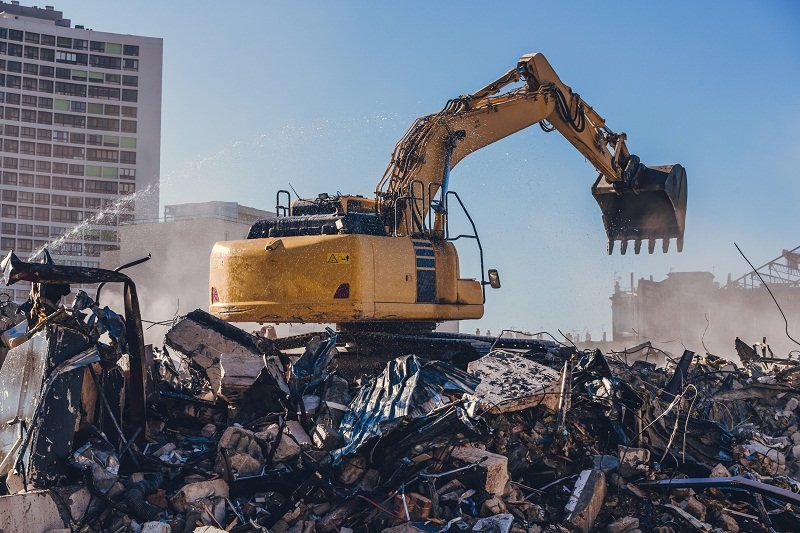House demolition can be an overwhelming process, whether you’re making way for a new construction project, addressing severe damage, or simply clearing out an old property. This comprehensive guide aims to cover everything you need to know about house demolition, from initial considerations to final cleanup.
1. Understanding House Demolition
Definition and Purpose
House demolition is the process of dismantling or destroying a residential structure to clear the site for new construction or other purposes. This can be necessary for various reasons including:
- New Construction: Replacing an old structure with a new one.
- Damage Repair: Addressing irreparable damage from natural disasters or neglect.
- Land Use Change: Converting a property for different uses or redevelopment.
Types of Demolition
- Total Demolition: Complete removal of the structure down to the foundation.
- Selective Demolition: Removing specific parts of the structure while retaining others.
- Deconstruction: Carefully dismantling the building to salvage materials for reuse or recycling.
Legal and Environmental Considerations
Demolition involves numerous legal and environmental factors:
- Permits: Most jurisdictions require permits before demolition can commence.
- Asbestos and Hazardous Materials: Safe removal and disposal are critical to prevent health hazards.
- Waste Management: Proper disposal or recycling of debris is necessary to comply with local regulations.
2. Planning and Preparation
Assessing the Property
Before demolition begins, assess the property to understand its condition and identify any potential challenges. Consider:
- Structural Integrity: Evaluate the safety and stability of the building.
- Utilities: Check for connections to water, electricity, and gas.
- Historical Significance: Some buildings may be protected by historical preservation laws.
Obtaining Permits
Permits are essential for legal demolition. The process usually involves:
- Application: Submit detailed plans and documentation to local authorities.
- Inspection: An inspector may visit the site to ensure compliance with regulations.
- Approval: Obtain formal approval before beginning demolition.
Hiring Professionals
Demolition is a complex task that requires specialized knowledge and equipment. Hiring professionals can include:
- Demolition Contractors: Experienced in handling various types of demolition.
- Architects and Engineers: To assess structural integrity and plan the demolition.
- Environmental Consultants: For handling hazardous materials and ensuring compliance with environmental regulations.
Cost Estimation and Budgeting
The cost of demolition varies based on several factors:
- Size and Complexity: Larger and more complex structures are more expensive to demolish.
- Hazardous Materials: Removal and disposal of materials like asbestos can increase costs.
- Disposal Fees: Costs associated with transporting and disposing of debris.
Prepare a detailed budget that includes all potential costs and contingencies.
3. Pre-Demolition Procedures
Utility Disconnections
Before demolition can proceed, all utilities must be disconnected:
- Electricity: Ensure power lines are safely disconnected.
- Water: Shut off the water supply and drain pipes.
- Gas: Disconnect gas lines to prevent leaks and explosions.
Salvage and Recycling
Salvaging and recycling materials from the demolition site can be both economically and environmentally beneficial:
- Salvage: Remove and reuse valuable materials such as wood, fixtures, and appliances.
- Recycling: Separate materials like metals, concrete, and glass for recycling.
Hazardous Materials
Address hazardous materials carefully:
- Asbestos: Professional removal is required due to health risks.
- Lead Paint: Proper removal and disposal methods are essential.
- Other Hazards: Chemicals and other potentially harmful substances must be handled appropriately.
Structural Assessments
A structural assessment is necessary to ensure safety:
- Load-Bearing Walls: Identify and address any load-bearing walls.
- Foundation Issues: Check for issues that might complicate the demolition process.
- Stability: Ensure the structure is stable enough to safely begin demolition.
4. Demolition Methods
Manual Demolition
Manual demolition involves using hand tools and equipment to dismantle the building. It is:
- Labor-Intensive: Requires significant manual labor and time.
- Selective: Allows for careful removal of specific parts of the structure.
- Controlled: Minimizes damage to surrounding areas and structures.
Mechanical Demolition
Mechanical demolition uses heavy machinery such as:
- Excavators: Equipped with specialized attachments like crushers and shears.
- Bulldozers: Used for pushing and breaking down structures.
- Hydraulic Hammers: For breaking concrete and other materials.
Explosive Demolition
Explosive demolition, or controlled demolition, uses explosives to bring down a building:
- Precision: Requires careful planning and expertise to control the collapse.
- Safety: Ensures minimal impact on surrounding areas.
- Speed: Efficient for large-scale demolitions.
Deconstruction vs. Demolition
Deconstruction involves:
- Careful Dismantling: Focuses on salvaging and reusing materials.
- Environmental Impact: Reduces waste and promotes recycling.
- Cost: Can be more expensive due to labor and careful handling.
Demolition, in contrast, is typically faster but may result in more waste.
5. Safety Protocols
Safety Gear and Equipment
Proper safety gear is essential:
- Protective Clothing: Hard hats, gloves, and steel-toed boots.
- Eye and Ear Protection: Safety goggles and hearing protection.
- Respirators: For protection against dust and hazardous materials.
Site Safety Measures
Ensure site safety by:
- Barricading: Restricting access to the demolition site.
- Signage: Clearly marking hazards and safety instructions.
- Emergency Plans: Developing and communicating emergency procedures.
Emergency Procedures
Prepare for emergencies by:
- First Aid Kits: Keeping well-stocked first aid kits on site.
- Emergency Contacts: Having contact information for emergency services readily available.
- Evacuation Plans: Ensuring all personnel are familiar with evacuation routes.
Waste Management
Effective waste management includes:
- Segregation: Separating different types of waste for recycling or disposal.
- Disposal: Using licensed waste disposal services.
- Documentation: Keeping records of waste disposal and recycling activities.
House demolition can be an overwhelming process, whether you’re making way for a new construction project, addressing severe damage, or simply clearing out an old property. This comprehensive guide aims to cover everything you need to know about house demolition, from initial considerations to final cleanup.



